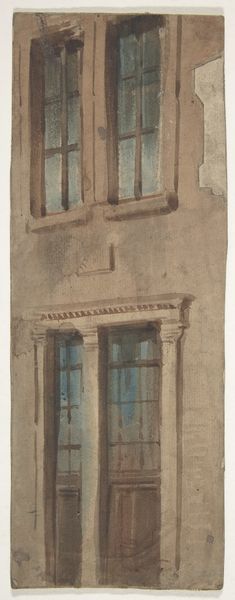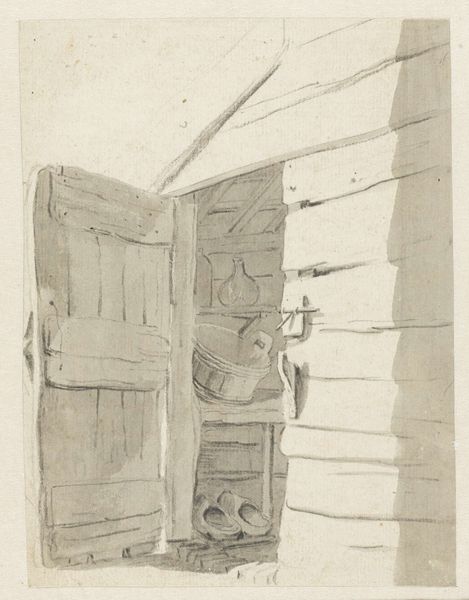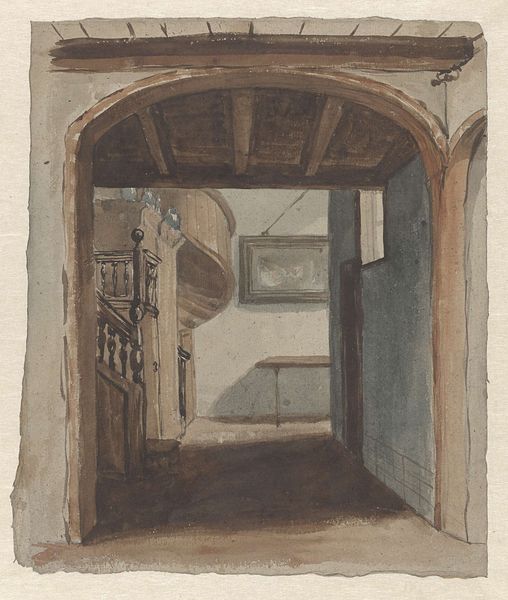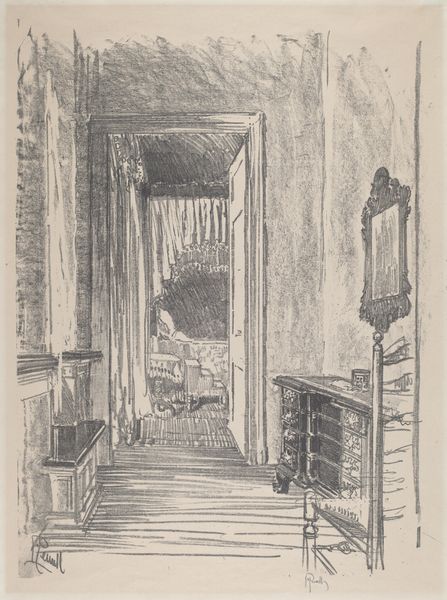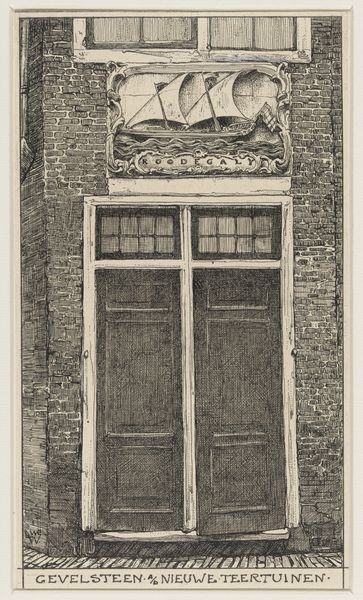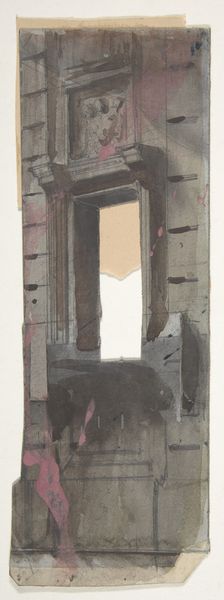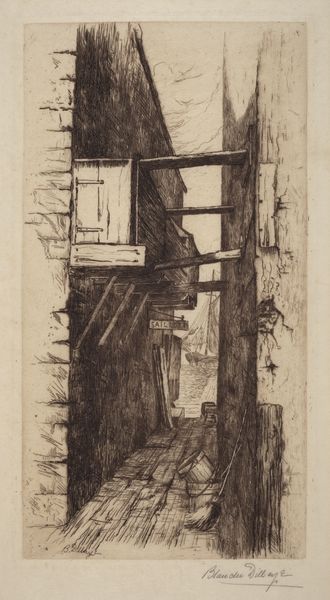
Design for a Stage Set at the Opéra, Paris 1830 - 1890
0:00
0:00
drawing, print, watercolor
#
drawing
#
water colours
# print
#
watercolor
#
cityscape
#
building
Dimensions: sheet: 9 3/16 x 2 13/16 in. (23.3 x 7.1 cm)
Copyright: Public Domain
Editor: Here we have Eugène Cicéri's "Design for a Stage Set at the Opéra, Paris," likely created sometime between 1830 and 1890, using watercolor and print. The muted colors give it a rather somber and unfinished quality. How do you interpret this work? Curator: It strikes me as an invocation of absence within grandeur. This "unfinished quality," as you say, becomes politically charged when we consider the historical backdrop of Parisian opera. The Opéra, often a stage for social performance and class display, masks the labor and the inequalities of access that allow it to exist. Cicéri’s design, by not fully rendering the opulence it hints at, implicitly gestures to those excluded from the spectacle. Editor: So, you're suggesting that its incompleteness is a deliberate commentary? Curator: Precisely. The vagueness undermines the monolithic image of the opera. It opens up questions: Who builds these sets? Who is allowed inside? The bareness in the rendering can almost be viewed as a critique of the Opera and the society it entertained, one built upon exploitation. Can we see a premonition of Walter Benjamin's observation, 'There is no document of civilization which is not at the same time a document of barbarism?' Editor: That's fascinating. I hadn't considered the incompleteness as a deliberate choice with those implications. I guess I just thought it was unfinished! Curator: That's the power of engaging with art through multiple lenses. Even in something seemingly simple, we can find reflections of complex social and political realities. Thinking about these social layers makes you wonder about other performance arts, right? Editor: Absolutely! It makes you want to know, what kind of world does that reveal behind the scenes?
Comments
No comments
Be the first to comment and join the conversation on the ultimate creative platform.


